| First made for guitar, this legendary fuzz has been also made for bass. The result is a very dark fat fuzz with tone of bass and subs, but also very little bite and attack. Some like it, others don't and this article is made for the latest who own one and don't know what to do with it. I'm going to discuss a few very simple mods that can transform it into something funnier. This article is based on this mods list and plan of the big muff version for guitar available here. I'll detail here the following mods: high end roll off mod, diode mod, tone stack mod, and bias mod, this later is not listed on the website above. And before all, here's the result: |
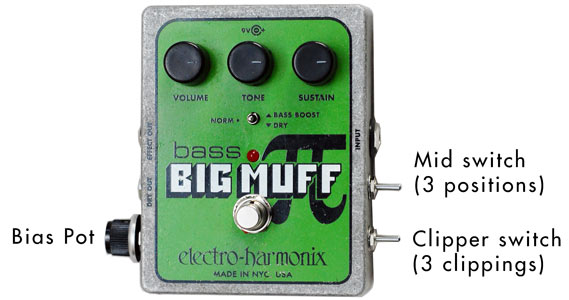
|
The schematic.During all the article we will use the schematic below. It's from the guitar version but you'll find it also in the bass version along with the "dry" and "bass boost" circuits added for the bass version. The components numbering is not the same in the pedal also, and the diodes are replaced by transistors like diodes. We don't need the "dry" and "bass boost" circuits for this article |
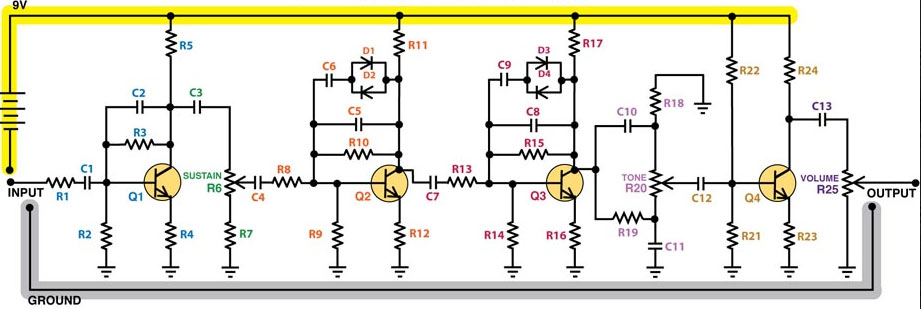
|
High end roll off mod.It's a useless mod on the bass version... On the guitar version changing caps C5 and C8 will change the amount of high end treble generated by the distortion. On the bass version the C5, C8 are unmarked and seems to be 470pF. They form a low pass filter with resistances R11 and R17 who are 12k. The cut off frequency for the bass version is thus F = 1/(2xPixRxC) = 1/(2 x 3.14 x 0.00000000047 x 12000)= 28 218Hz. So the bass version let all the treble pass (before you remove them with the "tone" knob). Don't bother removing them to get more bite. Also removing C2 improves a tiny bit the frequency roll of after 4kHz. But it has very little changes on the overall sound. |
Diodes mods. |
|
| This mod replaces diodes D1 to D4 by different diodes. Changing the diode type changes the distortion grain a bit an the dynamic a lot. In our case we needed first to remove the two transistors-like pairs of diodes (MMBD4148) to replace them by yellow leds. Fortunately there's a space left unused on the board for the leds. The a 3 position switch with 1N4148 on it allows to choose between 3 modes: 2x leds, 1 diode + 1 led. 2 diodes. The schematic of the mod is given on the right. When the switch is in the middle position only the leds works. In the low position, the single diode in turned on and, due to its threshold, replace one of the led. In the high position both leds are replaced by the 1N4148. |
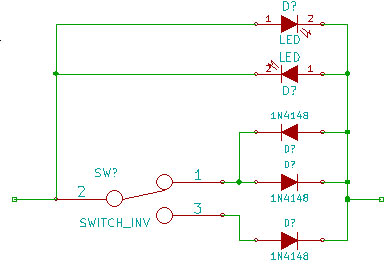
|
| Here's the result for the 3 positions: |
Tone stack mod.The base tone stack and it's frequency response is the following: |
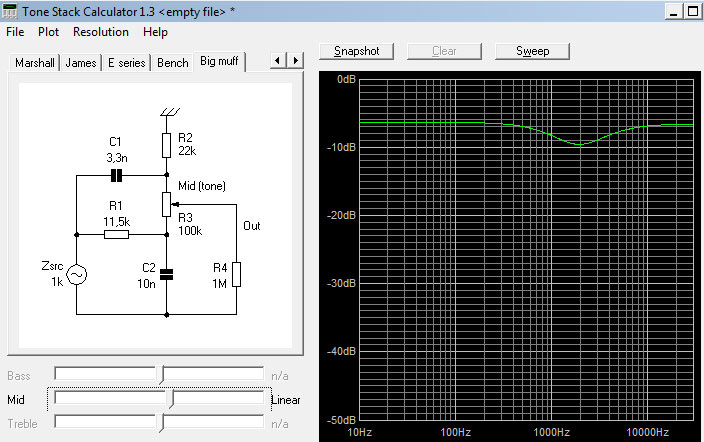
|
| This mods consist simply in adding a cap in parallel of C10 (on the upper schematic). With a 3 position switch and two caps of 10nF and 28nF, we respectively get the following curves: the original curve, one a small bump at 1kHz, and one with a bump at 600Hz: |
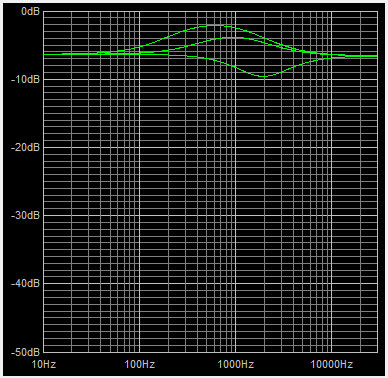
|
| And the audio result: |
Bias mod.This mod is not mentioned is the mod website and is probably the most exciting. We're going to change the bias of the output stage (Q4 transistor) with a 1M pot in parallel of R22. Here's the result for different pot's positions: |
Conclusion.With all these mods we made this pedal a lot funnier, with more sound possibilities and "bass synth"-like sounds thanks to the bias pot! And here the inside: |
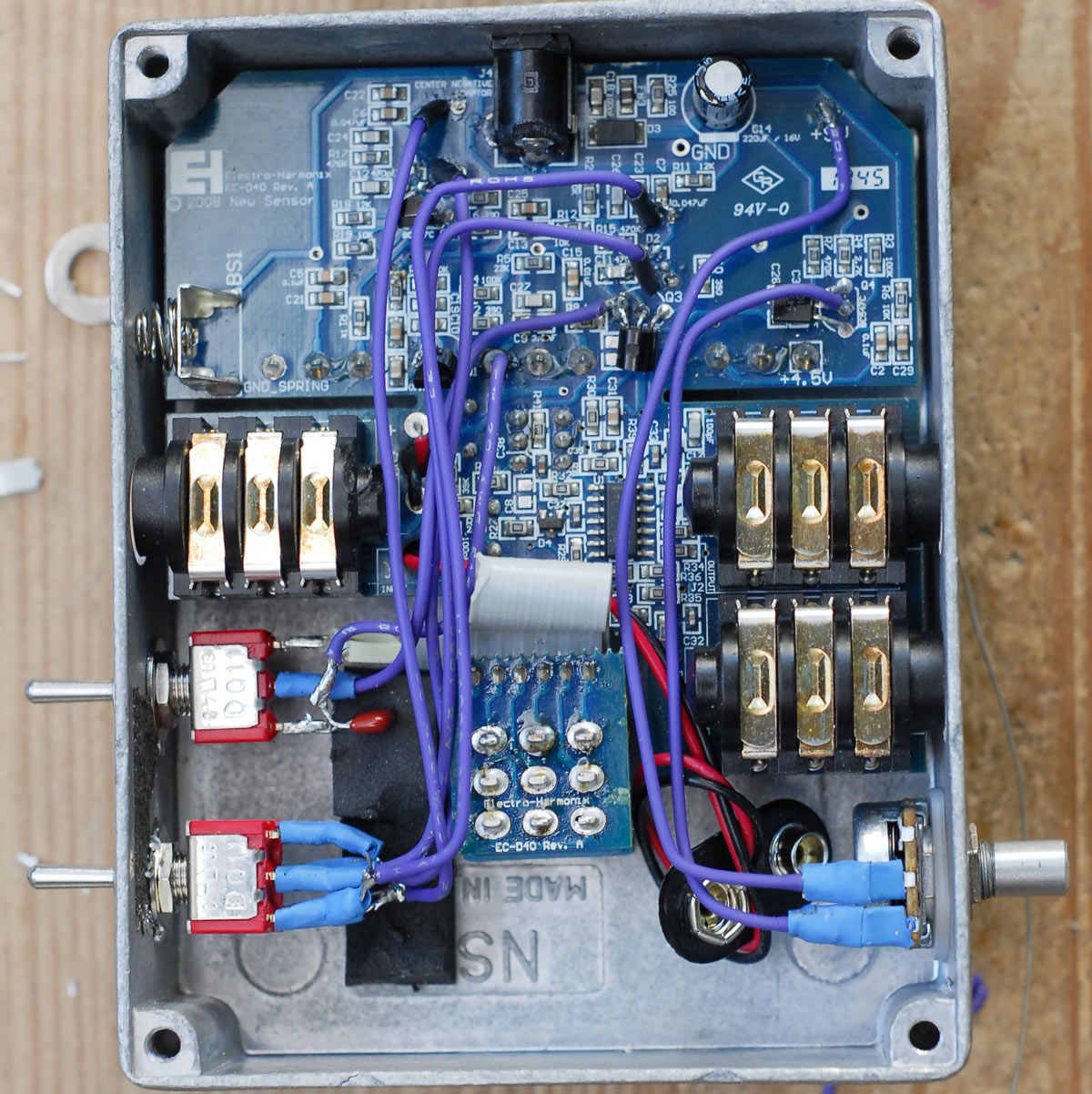
|

